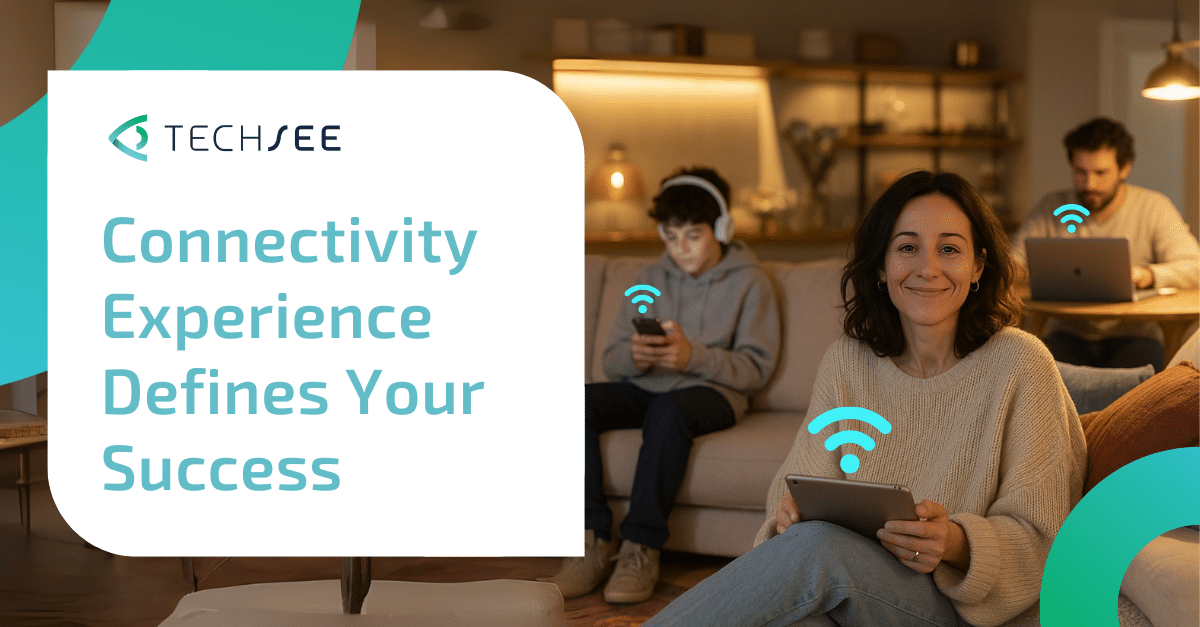Contents
- The Connectivity Crisis: A Strategic Imperative
- The Shifting Telecom Landscape
- Strategic Challenges Facing Providers
- The Churn Crisis: Connectivity as the Critical Factor
- The Operational Cost of Connectivity Failure
- Technology-Enabled Resolution
- FAQ
- 1. What is the primary driver of customer churn in the telecom industry?
- 2. How much does a “truck roll” typically cost telecom operators?
- 3. What is the “early-life vulnerability window” in telecom?
- 4. What is Visual Agentic AI, and how does it help with connectivity issues?
- 5. How many connected devices does the average U.S. internet household have?
- 6. What is AT&T’s Connectivity Guarantee and how does this signal a shift in the wider market?
The Connectivity Crisis: A Strategic Imperative
The telecom industry is at a critical point. A churn crisis signals a systemic failure in customer experience. Today’s easy switching landscape means this crisis costs more than just lost customers; it erodes margins, damages brand reputation, and limits long-term growth. Connectivity has become the frontline for profitability, customer loyalty, and service leadership, demanding urgent action.
Telecom executives must act now. The challenge isn’t just selling more bandwidth; it’s also about delivering a better experience. You must ensure a consistently superior connected experience that retains your core value – connectivity that simply works, everywhere in the home, all the time. Connectivity Guru, powered by Visual Agentic AI, offers a transformative service model built on assurance, resolution, and lifetime value. This model is not just an option; it’s a strategic imperative that lets you lead in the evolving connectivity market.
Download the full report: Is Connectivity Experience the New Battleground?
The Shifting Telecom Landscape
The telecommunications industry reached an inflection point in 2025. For decades, competition focused on network coverage, speed, and pricing. Now, the industry is fundamentally transforming how it realizes value and manages customer relationships.
Market Dynamics & Competitive Forces
The U.S. mobile market remains dominated by three major carriers, holding 96% combined market share as of December 2024:
- T-Mobile: 35%
- Verizon: 34%
- AT&T: 27%
Fixed wireless access (FWA) is rapidly emerging, with 5G now seriously competing with traditional fixed-line home internet access. Cable companies aggressively expanded their MVNO footprints. Charter’s Spectrum Mobile now has over 10 million subscribers, and Comcast’s Xfinity Mobile reached 7.5 million, serving over 17.5 million mobile customers combined. Disruptive entrants like Starlink rapidly grew, surpassing 5.4 million global subscribers by March 2025. Regional fixed wireless access providers continue gaining traction in underserved markets.
Infrastructure Evolution
5G coverage now reaches over 300 million Americans, covering 90% of the population. However, millimeter wave (mmWave) deployment remains concentrated in major metropolitan areas. Simultaneously, fiber-to-the-home deployments accelerated to 76.5 million U.S. homes (58% of households), a 13% annual growth rate that aligns with industry projections.
These infrastructure advancements created new revenue streams beyond consumer connectivity. These include enterprise-grade private networks, innovative city initiatives, and industrial IoT applications.
Strategic Challenges Facing Providers
Telecom providers face increasing commoditization of core connectivity services. Average mobile service revenue per user (ARPU) is projected to decline at a -1.3% compound annual growth rate. At the same time, fixed broadband ARPU remains flat, highlighting the difficulty of differentiating solely on price and technical specifications.
The Experience Expectation Gap
Today’s telecom customers demand digital experiences that mirror those delivered by tech giants like Apple, Amazon, and Netflix. They expect:
- Effortless service functionality
- Intuitive self-service capabilities
- Proactive issue resolution
- Consistent quality across all environments
Compounding these challenges, the average U.S. internet household now contains 17 connected devices, dramatically increasing network complexity and support requirements.
Connectivity Experience as the New Battlefield
Forward-thinking providers recognize customer experience as the critical differentiator in a saturated market. Strategic investments in experience transformation aim to reduce churn, improve operational efficiency, and drive new revenue streams. Superior customer experiences create a virtuous cycle: fostering loyalty, decreasing support costs, and opening opportunities for service expansion.
The Churn Crisis: Connectivity as the Critical Factor
Despite billions invested in infrastructure upgrades, technological advancements, and rebranded service guarantees, customers continue asking: “Why can’t I stay connected?”
In 2025, North American telecom providers face an escalating churn challenge that goes beyond conventional pricing and promotional strategies. The crisis centers on the lived customer experience, whether it’s dropped calls, inconsistent home WiFi coverage, or service unpredictability.
Connectivity: The Primary Churn Driver
Connectivity quality emerged as the predominant driver of customer dissatisfaction. J.D. Power research indicates it ranks second only to pricing concerns among reasons mobile customers switch providers. Up to 45% of wireless churn can be directly attributed to signal reliability issues, buffering, or inconsistent service performance.
The broadband sector faces similar challenges. Customers expect flawless internet performance throughout their homes, across multiple devices, at all hours. When these expectations go unmet, churn follows. More than half of broadband providers exceed the industry’s target annual churn rate of 3%, primarily due to suboptimal connectivity experiences. Even minor or intermittent service disruptions can trigger significant customer response, including escalated support requests, technician dispatches, and early termination decisions. As Deloitte noted, reliability transitioned from a competitive advantage to a baseline customer expectation.
Rising Customer Standards
As homes become increasingly connected through streaming services, smart devices, and remote work arrangements, customer tolerance for connectivity limitations has disappeared. Service guarantees (like “WiFi+” offerings) elevate expectations for comprehensive coverage throughout the home, not merely within traditional modem range.
The Operational Cost of Connectivity Failure
Operational complexity in telecommunications has a significant impact on both customer satisfaction and profitability. Connectivity challenges, inefficient service processes, and inadequate early customer experiences increase operational costs and accelerate customer churn.
The Support Escalation Spiral
Connectivity issues often result in multiple customer support interactions. The average cost of a telecom call center interaction ranges from $2.70 to $5.60. With approximately 30% of customers requiring multiple contacts to resolve a single connectivity issue, the financial impact on telecom operators is substantial.
The Field Service Burden
Many field service dispatches (“truck rolls”) ultimately prove unnecessary. These “No Fault Found” (NFF) scenarios occur when technicians are unable to identify or replicate reported issues upon arrival, accounting for an estimated 17-20% of all field service visits by telecom operators. With each truck roll costing between $150 and $1,000, these unproductive dispatches represent significant operational waste.
The Early-Life Vulnerability Window
The initial subscription period is critically important for long-term retention. Early-life churn (customers departing within their first three months of service) accounts for 10-15% of all customer losses for many providers. This early attrition typically stems from poor onboarding experiences, unresolved technical issues, or unmet service expectations.
Technology-Enabled Resolution
To address these challenges effectively, leading telecom companies invest in advanced diagnostic technologies, AI-driven support systems, and enhanced customer onboarding processes. By implementing Visual Agentic AI solutions, you can proactively identify and resolve connectivity problems, dramatically reduce unnecessary field dispatches, and transform the critical initial customer experience, thereby improving satisfaction metrics and operational cost structures. To learn more, visit the Connectivity Guru page.
Effective connectivity management requires visibility, control, and customer trust. Providers implementing tools designed for the real-world complexity of connected homes deliver the seamless experience customers demand, preemptively addressing churn risks before they materialize.
See how Connectivity Guru can transform your operations: book a personalized demo.
FAQ
1. What is the primary driver of customer churn in the telecom industry?
Connectivity quality is the predominant driver of customer dissatisfaction and churn, ranking second only to pricing concerns among reasons customers switch providers.
2. How much does a “truck roll” typically cost telecom operators?
Each “truck roll” (field service dispatch) costs between $150 and $1,000, depending on the geography and the complexity of the task. Approximately 17-20% of these visits are “No Fault Found” scenarios, meaning the technician cannot identify or replicate the reported issue.
3. What is the “early-life vulnerability window” in telecom?
The early-life vulnerability window refers to the initial three months of a customer’s service. During this critical period, 10-15% of total annual churn often occurs due to poor onboarding, unresolved technical issues, or unmet service expectations.
4. What is Visual Agentic AI, and how does it help with connectivity issues?
Visual Agentic AI integrates advanced computer vision with real-time AI automation to understand connectivity environments comprehensively. It interprets physical spaces, signal patterns, and network configurations to provide contextualized, visual guidance for customers, agents, and technicians, leading to faster resolution rates and fewer dispatches.
5. How many connected devices does the average U.S. internet household have?
The average U.S. internet household now contains 17 connected devices, significantly increasing network complexity and support requirements.
6. What is AT&T’s Connectivity Guarantee and how does this signal a shift in the wider market?
AT&T’s Connectivity Guarantee provides automatic bill credits for fiber outages lasting more than 20 minutes or mobile disruptions lasting longer than one hour. This signals a significant shift in the wider market, as it demonstrates that reliability guarantees directly drive measurable growth, moving beyond traditional competition centered on network coverage, speed, and pricing to focus on consistent service delivery and customer trust.







